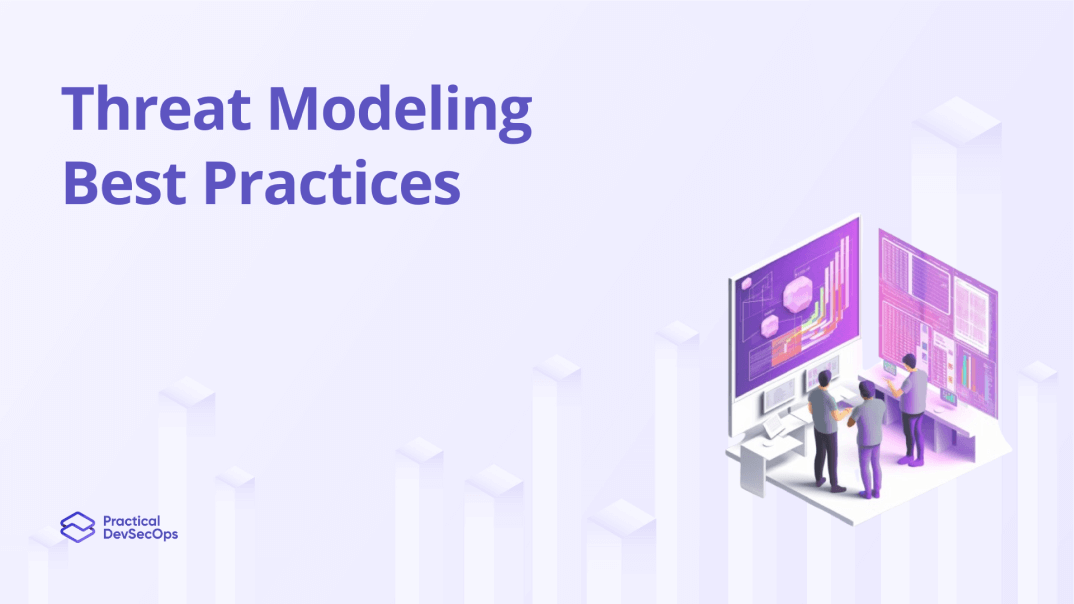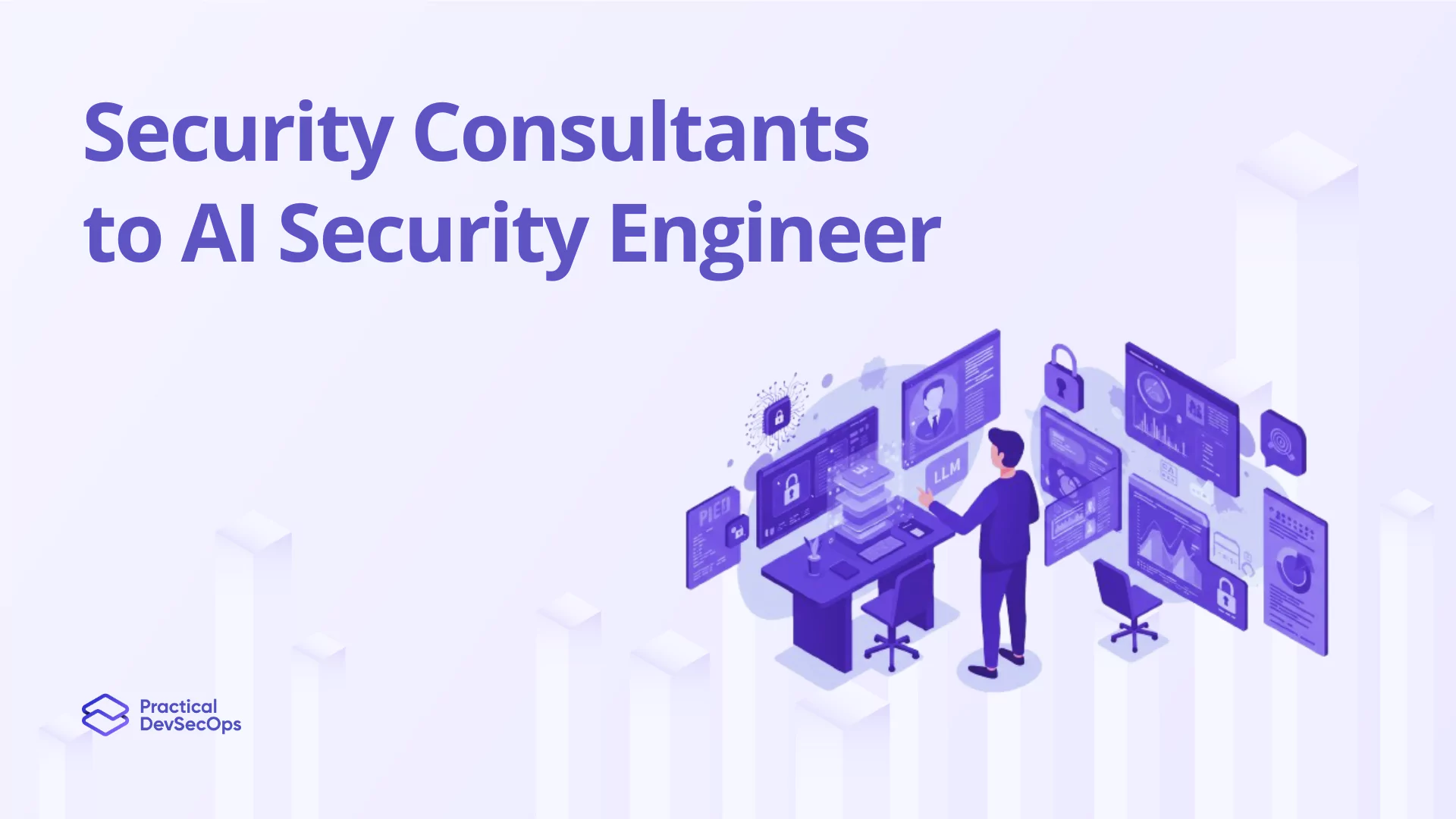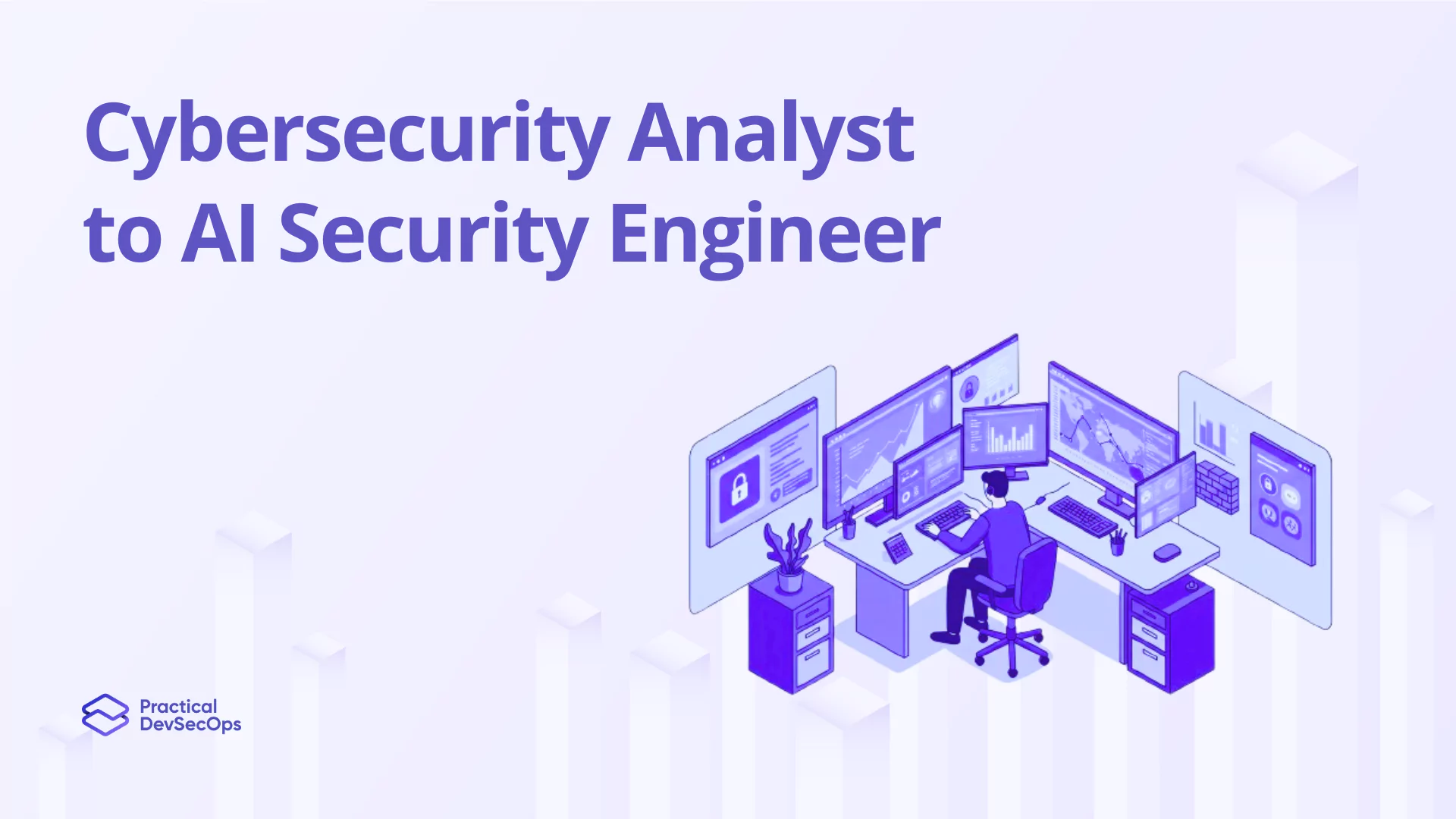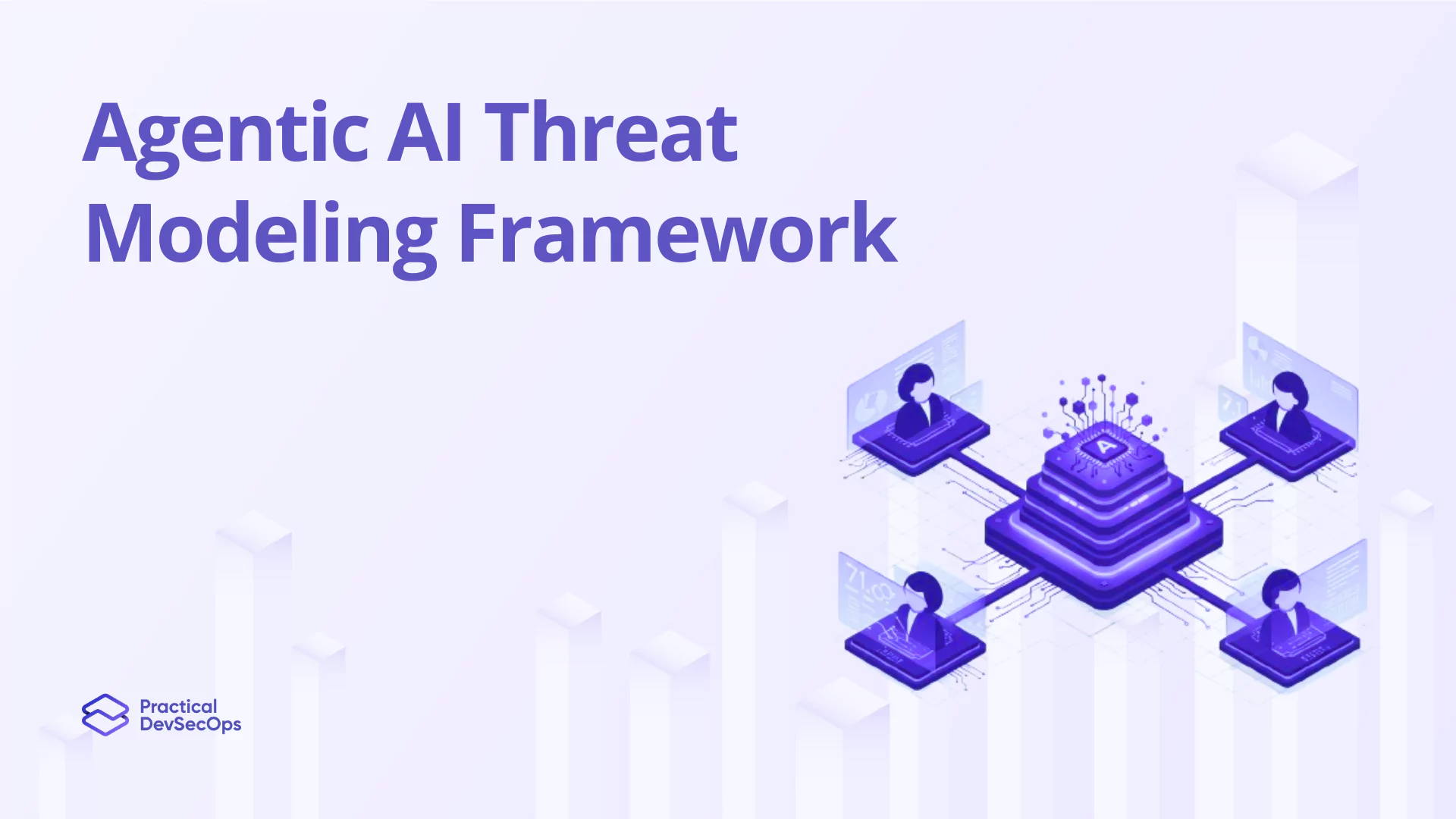Threat modeling is a proactive approach that helps to identify and mitigate potential vulnerabilities early in the software development lifecycle. To achieve effective threat modeling, it is crucial to follow best practices that ensure comprehensive analysis, accurate risk assessment, and robust countermeasures. This article will explore some essential threat modeling best practices, including the key stages involved in the process.
Threat Modeling Best Practices for 2025
Here is a list of the best threat modeling best practices that can improve your risk analysis methods and be proactive in securing your systems
Start Early in the Development Lifecycle
Incorporate threat modeling from the very beginning of the software development process. By identifying and addressing potential threats in the early stages, you can minimize the cost and effort required for remediation later.
Involve Diverse Stakeholders
Gather input from various stakeholders, including developers, architects, security experts, business representatives, and end-users. Different perspectives and expertise will help in identifying a wider range of threats and developing more effective mitigation strategies.
Understand the Business Context
Gain a deep understanding of the business objectives, assets, and critical processes. This knowledge allows for a more accurate assessment of threats and ensures that security measures align with the organization’s goals.
Also Read, How to Improve Your Analytics Thinking in Threat Modeling
Follow a Structured Methodology
Adopt a structured approach, such as STRIDE, DREAD, OCTAVE, or PASTA, to guide the threat modeling process. These methodologies provide a systematic framework for identifying and prioritizing threats.
Also Read, Types of Threat Modeling Methodology
Identify Assets and Attack Vectors
Define the assets within your system and understand how attackers could exploit vulnerabilities to gain unauthorized access. Consider both internal and external threats, as well as potential insider risks.
Assess Impact and Likelihood
Evaluate the impact of potential threats in terms of confidentiality, integrity, and availability of critical assets. Determine the likelihood of each threat occurring based on factors such as vulnerabilities, threat actors, and the organization’s threat landscape.
Also Read, Threat Modeling vs Penetration Testing
Prioritize Mitigation Strategies
Prioritize the identified threats based on their severity and potential impact. Develop a risk mitigation plan that includes both technical controls (e.g., secure coding practices, access controls) and non-technical controls (e.g., policies, employee training).
Continuously Review and Update
Threat modeling is an iterative process and should be revisited regularly. As the threat landscape evolves and new vulnerabilities emerge, reevaluate your threat model to ensure its continued effectiveness.
Document and Communicate Findings
Clearly document the identified threats, their potential impact, and the recommended mitigation strategies. Communicate these findings to relevant stakeholders to foster a shared understanding of security risks and necessary countermeasures.
Integrate Threat Modeling into Development Processes
Embed threat modeling into your organization’s development and deployment processes. Integrating it with other security practices, such as secure coding practices and penetration testing, enhances the overall security posture of your systems.
Why Threat Modeling Should Start Early?
“Shift Left” Security in DevOps
- “Shift Left” means moving security tasks earlier in the software development process instead of waiting until the end.
- In DevOps, this allows teams to detect and address security risks during design and development, not just before deployment.
- Integrating threat modeling early helps catch issues before they become expensive or complicated to fix.
Benefits of Early Risk Identification
- Cost Savings: Fixing a security issue during development is much cheaper than after release.
- Better Security: Early identification means vulnerabilities are resolved before attackers can exploit them.
- Higher Quality: Teams build more robust products by understanding potential threats from the start.
- Reduced Rework: Discovering threats late often requires significant changes and delays. Early modeling saves time.
Threat Modeling in Agile and CI/CD Environments
- Fits Agile Sprints: Threat modeling can be integrated into each sprint, helping teams review security as features are developed.
- Supports Fast Releases: In Continuous Integration/Continuous Deployment (CI/CD), threat modeling ensures new code is safe before going live.
- Collaboration: In fast-moving environments, regular threat assessments help development, security, and operations teams work together more effectively.
Business & Compliance Incentives
- Regulatory Compliance: Many industries require proactive risk management to meet laws and standards (like GDPR, HIPAA, or PCI DSS).
- Customer Trust: Demonstrating strong security practices builds confidence with clients and users.
- Competitive Advantage: Organizations that manage threats early avoid costly breaches and reputational damage, setting themselves apart in the market.
- Avoid Fines: Early threat modeling helps prevent regulatory penalties by ensuring security requirements are met.
Who Should Be Involved in Threat Modeling?
Key Stakeholders
Effective threat modeling relies on input from a range of stakeholders, each offering unique perspectives and expertise. Involving these groups ensures comprehensive risk identification and mitigation:
- Security Team: Brings in-depth knowledge of threats, vulnerabilities, and industry best practices. Guides methodology and ensures standards are met.
- Engineering/Development: Understands the system’s architecture, implementation details, and practical constraints. Engages in hands-on threat identification and mitigation.
- Product Management: Ensures risk mitigations align with business goals and customer needs. Balances security with usability and market requirements.
- UX (User Experience): Highlights potential impacts of security controls on user workflows, helping prevent security measures from disrupting legitimate user actions.
- Legal and Compliance: Ensures that threat modeling considers regulations such as GDPR, HIPAA, PCI DSS. Raises awareness of legal and contractual security obligations.
- Operations and DevOps: Provides insight into deployment and operational risks. Helps integrate threat modeling into pipeline and runtime environments.
The Role of a Security Champion
A security champion is a designated member (often from the engineering or product team) who advocates for security throughout the development lifecycle. Their responsibilities include:
- Acting as a security point of contact within their team.
- Leading or facilitating threat modeling sessions.
- Promoting a security-first mindset and practices during development.
- Helping team members recognize and address security issues early.
- Bridging gaps between security experts and development, ensuring practical adoption of recommendations
How to Build Cross-Functional Collaboration?
Building cross-functional collaboration is essential for thorough and effective threat modeling:
Regular Joint Sessions: Host threat modeling workshops that involve all key departments (security, engineering, product, UX, legal, ops), fostering open communication and shared understanding of risks.
Shared Documentation: Use collaborative tools for data flow diagrams, threat logs, and findings to ensure transparency and consistent knowledge sharing.
Clear Roles: Define responsibilities for each stakeholder so everyone knows their contribution to the process.
Training & Awareness: Continually educate staff on security principles, the value of cross-functional input, and updates in tools or processes.
Feedback Loops: Encourage ongoing feedback and discussion after modeling sessions to improve the process and address emerging risks.
Roles & Responsibilities Matrix
A Roles & Responsibilities Matrix (often RACI: Responsible, Accountable, Consulted, Informed) clarifies each stakeholder’s involvement in threat modeling:
| Role | Responsible (R) | Accountable (A) | Consulted (C) | Informed (I) |
| Security Team | Methodology, Oversight | Approves Final | Supports Other Teams | Senior Leadership, Ops |
| Engineering | Conducts Analysis | Documents Results | Security Team, Product, UX | All Contributors |
| Product Management | Defines Requirements | Approves Priorities | Security, Legal, UX | Stakeholders |
| UX | Evaluates Impact | — | Engineering, Product | Product Stakeholders |
| Legal/Compliance | Interprets Regulations | Advises on Gaps | Security, Product | Senior Management |
| Operations/DevOps | Risk Operationalization | Implement Controls | Security, Engineering | All Contributors |
| Security Champion | Facilitates Team Effort | N/A | Whole Team | All Contributors |
Section 8: Threat Modeling in Modern Environments
Cloud (AWS, Azure, GCP)
- Cloud threat modeling examines risks unique to cloud platforms, such as misconfigurations, insecure identities, excessive permissions, and exposed data.
- Each provider (AWS, Azure, GCP) has different services and unique attack surfaces, but all require:
- Careful management of IAM roles and permissions to prevent unauthorized access.
- Secure configuration of cloud storage (like S3 buckets) and serverless functions to avoid accidental data exposure.
- Continuous monitoring, since cloud environments and infrastructure can change quickly.
Best practices include starting threat models early, updating them regularly, and using frameworks provided by cloud vendors to guide security reviews (such as AWS and Azure Well-Architected Frameworks).
Kubernetes and Containers
- Kubernetes brings new threats due to its orchestration of containers. Risks include:
- Untrusted container images running inside the cluster.
- Weak network rules or open APIs allowing unauthorized access.
- Poor role-based access control (RBAC) and secrets management.
- Threat models should focus on cluster configuration, container isolation, and protections for sensitive workloads.
APIs and Microservices
- APIs and microservices architectures increase the number of entry points, making them attractive to attackers.
- Threat modeling should address:
- Authentication and authorization for each API.
- Input validation and protection against injection attacks.
- Secure transmission and storage of data.
- Monitoring for abuse patterns, such as API scraping or DDoS.
AI/ML Systems (LLMs, NLP APIs, Data Leakage Risks)
- AI/ML systems, especially LLMs and NLP APIs, face unique threats, including:
- Data leakage through prompt injection or model outputs.
- Model manipulation and adversarial inputs designed to cause unsafe behavior.
- Risks of exposing proprietary algorithms or sensitive training data.
- Threat modeling in AI/ML requires special attention to data flows, model access controls, and monitoring for unexpected outputs or model abuse.
Zero Trust Architectures
- Zero Trust assumes no part of the network is inherently secure.
- Threat modeling should cover:
- Continuous verification of user and device identity.
- Least-privilege access to every resource.
- Micro-segmentation to limit movement if an attacker gains access.
- Regular review of access policies and authentication mechanisms.
Modern environments demand that threat modeling is not a one-time task but an ongoing, adaptive process. Each new architecture—cloud, containers, APIs, AI/ML, or zero trust—brings new attack surfaces and requires tailored threat modeling practices to maintain strong security.
Section 9: Common Mistakes to Avoid
Treating Threat Modeling as a One-Time Exercise
- Mistake: Thinking threat modeling is something you do once, then never revisit.
- Why it’s a problem: Systems and threats constantly change; a one-off effort quickly becomes outdated, leaving you exposed to new risks.
- How to avoid: Make threat modeling a recurring, regular activity. Review and update models whenever there are changes in architecture, features, or the threat landscape.
Leaving It to Security Teams Only
- Mistake: Assigning all threat modeling tasks to the security team and excluding others.
- Why it’s a problem: Security teams may lack detailed knowledge of every system and business goal. This isolation creates gaps, limits creativity, and can slow down remediation.
- How to avoid: Involve a mix of developers, architects, product managers, and operations. Diverse teams catch more risks and find stronger solutions.
Not Mapping Real-World Attack Scenarios
- Mistake: Threat models that are too abstract or generic, without considering how real attackers would exploit your systems.
- Why it’s a problem: You may overlook the most pressing vulnerabilities or miss how existing controls can be bypassed in practice.
- How to avoid: Draw from real-world incidents, penetration testing, and threat intelligence. Build scenarios around how attackers actually operate, and focus on practical, actionable mitigations.
Inadequate Communication to Developers
- Mistake: Failing to communicate threats, mitigations, and priority risks effectively to development teams.
- Why it’s a problem: Developers might not understand what needs fixing or why it’s important, leading to incomplete or ineffective security fixes.
- How to avoid: Share threat model results clearly and in plain language. Use documentation and meetings to ensure developers know what threats to address, how, and by when. Foster ongoing dialogue and provide security training when needed.
Section 10: Real-World Example/Case Study
1. System Mapping
- Create a data flow diagram (DFD) that outlines major components: mobile/web client, authentication API, transaction API, third-party integrations (like Plaid), databases, and the cloud infrastructure hosting them.
- Identify points where data moves between these components, user entry points, and where sensitive data is stored or processed.
2. Apply STRIDE Categories
Spoofing:
- Threat: An attacker pretends to be a legitimate user by stealing login credentials or session tokens.
- Example: Credential theft through phishing lets the attacker access a user’s bank account or initiate unauthorized transactions.
- Mitigation: Enforce multi-factor authentication (MFA), short-lived tokens, biometric verification, and device registration.
Tampering:
- Threat: Attackers modify data in transit, such as changing transaction amounts or manipulating API requests.
- Example: A man-in-the-middle modifies a deposit from $10,000 to $1,00,000 between the app and the backend.
- Mitigation: Use HTTPS/TLS, digitally sign critical transactions, implement request payload integrity checks, and use strict server-side validation.
Repudiation:
- Threat: A user or attacker denies having performed an action, such as making a transfer.
- Example: A user claims they never authorized a withdrawal that shows up in audit logs.
- Mitigation: Record all actions in tamper-evident logs, send notifications for sensitive actions, and maintain full transaction histories.
Information Disclosure:
- Threat: Sensitive data, like account balances or personally identifiable information (PII), is disclosed to unauthorized parties.
- Example: An API vulnerability exposes user data or transaction history to unintended users (a risk highlighted by the Plaid API case).
- Mitigation: Encrypt data at rest and in transit, use strict access controls, avoid storing sensitive data in client apps, and regularly test for API/data leaks.
Denial of Service (DoS):
- Threat: Attackers overwhelm the system, causing downtime or preventing users from accessing their accounts.
- Example: Botnets flood the transaction or authentication APIs with traffic, making the service unavailable to real users.
- Mitigation: Implement rate-limiting, IP allow/deny lists, web application firewalls, and scalable infrastructure.
Elevation of Privilege:
- Threat: Attackers gain higher access rights than intended, such as a regular user becoming an admin.
- Example: Exploiting a vulnerability in the API to change one’s role from ‘user’ to ‘admin’.
- Mitigation: Apply strict RBAC (role-based access control), validate authorization on every sensitive operation, and regularly audit privileges.
Lessons from Real Incidents
- Capital One data breach and Plaid API vulnerabilities show how insecure APIs and over-permissioned access in FinTech apps lead to real-world attacks.
- Mapping STRIDE threats to each system component reveals weak points and guides where to implement controls, like stronger authentication, better encryption, and improved monitoring.
Conclusion
By following these threats modeling best practices and going through the key stages of scope definition, asset identification, threat identification, vulnerability analysis, and risk prioritization and mitigation, you can significantly enhance your organization’s security defenses. Threat modeling provides a systematic and proactive approach to identify and address potential vulnerabilities before they can be exploited.
Upskill in Threat Modeling
FAQ Section
What is threat modeling and why is it important?
Threat modeling is a proactive approach to identifying security risks in systems. It helps reduce vulnerabilities, improves collaboration, and protects data by anticipating and mitigating possible attacks before they happen.
How does threat modeling fit into the SDLC?
Threat modeling integrates security early in the Software Development Life Cycle. It identifies risks during design, development, and deployment phases to catch and fix security issues before release.
What are the key steps of threat modeling?
Threat modeling follows a structured process:
- Define objectives
- Create system diagrams
- Identify threats
- Assess risks
- Recommend mitigations
Can threat modeling be automated?
While automation helps with some parts of threat modeling, human expertise remains essential. Automated tools can scan code and generate diagrams, but complex threats need expert analysis.
What is the difference between STRIDE and PASTA?
STRIDE and PASTA are two popular threat modeling approaches:
- STRIDE: Categorizes threats by type (Spoofing, Tampering, Repudiation, Information Disclosure, Denial of Service, Elevation of Privilege)
- PASTA: Focuses on attacker motivations and business impact to assess risk
Is threat modeling necessary for small apps?
Yes, threat modeling is important regardless of app size. Small apps can have vulnerabilities too, so proactively identifying risks helps secure them and maintain compliance.
Who should own the threat modeling process?
Threat modeling is a collaborative effort but typically led by security teams. They coordinate with development, product, and other stakeholders to ensure comprehensive coverage.
How often should I update my threat models?
Threat models need regular updates.
- Update whenever significant changes occur in architecture, features, or the threat landscape.
- Review after major development milestones or incidents.
What’s a real example of threat modeling in action?
For example, a FinTech app uses threat modeling to identify and mitigate risks like:
- Unauthorized access (mitigated with MFA)
- Data leaks (mitigated with encryption)
- Privilege escalation (mitigated with role-based access controls)
List out threat modeling best practices for developers?
Best practices include:
- Conduct early and regular threat modeling
- Involve cross-functional teams
- Keep system diagrams up to date
- Address real-world attack scenarios
- Clearly document and communicate security issues
What are the 5 steps of threat modeling?
The five key steps are:
- Define security goals
- Diagram the system
- Identify threats
- Assess and prioritize risks
- Implement mitigations
What are the six most effective threat modeling?
Six core activities often considered most effective are:
- Asset identification
- System mapping
- Threat identification
- Vulnerability analysis
- Risk assessment
- Recommending solutions
What are three approaches to threat modeling?
Common approaches include:
- Asset-centric: Focus on what you need to protect
- Threat-centric: Focus on the attackers and their methods
- System-centric: Focus on the technical architecture and data flows
What is threat modeling in agile?
In agile development, threat modeling is iterative. Teams assess risks for new features and changes during each sprint and adjust security controls as the application evolves.
What are the KPIs for threat modeling?
Key performance indicators include:
- Number of threats identified and mitigated
- Coverage of critical assets
- Frequency of updates
- Time to remediate issues
- Reduction in post-release vulnerabilities
What tools are used for threat modeling?
Common threat modeling tools:
- Microsoft Threat Modeling Tool
- OWASP Threat Dragon
- IriusRisk
- ThreatMapper
- Lucidchart (for diagrams)
What are 6 steps for the threat mapping process?
The six threat mapping steps are:
- Identify assets
- Draw data flow diagrams
- Identify threats
- Analyze vulnerabilities
- Evaluate business impact
- Suggest countermeasures
What are the three basic questions to ask when threat modeling?
Always ask:
- What are we building?
- What can go wrong?
- What are we doing to address these risks?




